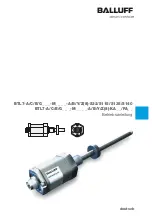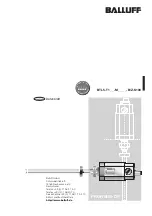
6.1.4 Proof Test Procedure
1. Bypass the PLC or take other action to avoid a false trip.
2. Inspect the Unit in detail outside and inside for physical
damage or evidence of environmental or process leaks.
a. Inspect the exterior of the Unit housing. If there is any
evidence of physical damage that may impact the integri-
ty of the housing and the environmental protection, the
unit should be repaired or replaced.
b. Inspect the interior of the Unit. Any evidence of mois-
ture, from process or environment, is an indication of
housing damage, and the unit should be repaired or
replaced.
3. Use the Unit’s DIAGNOSTICS menu to observe Present
Status, and review EVENT HISTORY in the Event Log.
Up to 20 events are stored. The events will be date and time
stamped if the internal clock is set and running. It is sug-
gested that the internal clock be set at the time of commis-
sioning of the unit. If the clock is set at the time of the
proof test, event times are calculated.
a. Choose the menu DIAGNOSTICS / Present Status.
i. Present Status should be OK.
b. Choose the menu DIAGNOSTICS / EVENT HISTORY /
Event Log
i. Any FAULT or WARNING messages must be investi-
gated and understood.
ii. Corrective actions should be taken for FAULT
messages.
4. Use the DIAGNOSTICS menu to perform a “CURRENT
LOOP TEST”. Choose the menu DIAGNOSTICS /
ADVANCED DIAGNOSTICS / TRANSMITTER TESTS /
Analog Output Test to change the output loop current and
confirm the actual current matches the value chosen.
a. Send a HART command to the transmitter (or use the
local interface) to go to the high alarm current output,
22mA, and verify that the analog current reaches that
value.
i. This step tests for compliance voltage problems such as
low supply voltage or increased wiring resistance.
ii. This also tests for current loop control circuitry and
adjustment problems.
b. Send a HART command to the transmitter (or use the
local interface) to go to the low alarm current output,
3.6mA, and verify that the analog current reaches that
value.
10
58-651 Pulsar
®
Model R86 SIL Functional Safety Manual


































